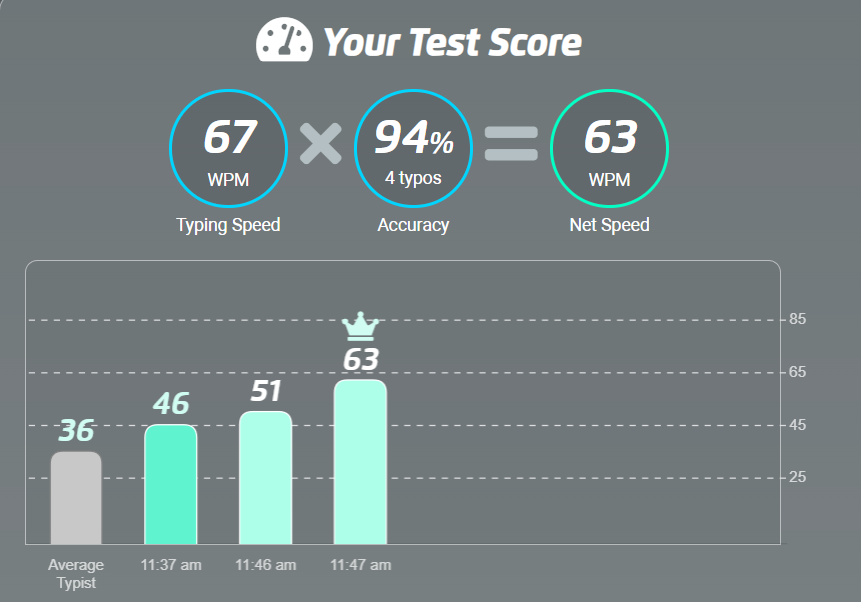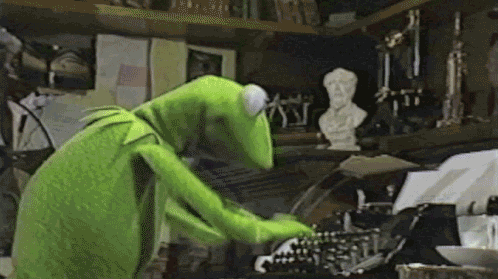Try this and you’ll know more about yourself in 7 days than you did in 7 months.
You know that feeling when you finally decide to learn something new, and suddenly you’re drowning in too many options?
- Learn Japanese?
- Pick up boxing?
- Try painting?
- Master editing?
And somehow, the more excited you are… the more stuck you feel.
That’s exactly where I was—not because I didn’t have time…
But because, for the first time in years, I actually did.
Context time: I had started waking up at 5 AM.
Built out a structure I now call the 3 Walks System.
And somehow, in doing that…
I bought myself more time than I knew what to do with.
Two days’ worth of space inside one.
It felt surreal.
But also… weirdly frustrating.
Because once I had the time, a new problem showed up:
“Okay, now that I can learn anything… what should I learn?”
I made a big list of skills, hobbies, and passions.
Narrowed it down.
Even picked the top 5 that made me feel most excited.
And yet, I still couldn’t decide.
Every option felt exciting.
Every path seemed meaningful.
But I didn’t want to guess. I wanted to choose right.
Because around the same time, I read The Tail End by Tim Urban which opened a whole new perspective.
The Tail-End Realization
Time is a finite currency.
In that post, Tim reframed life not in years, but in experiences left:
You don’t just have 50 years left, you have 300 Sunday mornings, 20 road trips with friends, pizza nights with friends? Maybe 120 more and 60 deep-flow projects if you’re lucky.
This realization shook me.
It made me realize: I don’t just have time.
I have a finite number of chances to become who I want to be.
If I waste them in indecision, they won’t come back.
And out of that frustration; after days of journaling, walking, overthinking, and real talk with myself, I present to you:
Skill Sampling.
The most powerful strategy I’ve created to escape analysis paralysis and move into aligned action.
It is my way of making those moments count. Of making sure I didn’t waste the tail end of my potential.
In a world where time is your most limited currency, this is how you spend it wisely.
Let me explain.
Skill Sampling: Taste Before You Commit
Skill Sampling is tasting a skill the way you’d sample flavours at an ice cream parlour.
Imagine you’re at Baskin Robbins.
You’re staring at 31 flavours.
Which one do you pick?
You don’t guess.
You sample.
That’s what skill sampling is….but for learning.
It’s how you stop wasting time deciding and start discovering what’s actually worth your time.
In Theory: What Is Skill Sampling?
Skill Sampling is a learning approach where you intentionally try multiple skills, often at a beginner level, to:
- Explore your curiosities
- Understand how you learn best
- Find hidden strengths and weaknesses
- Build a foundation across domains
- Decide what’s worth mastering
It’s structured exploration.
A mix of curiosity, creativity, and ROI-measuring.
It turns on your brain’s dopaminergic curiosity system, which thrives on novelty, i.e. when you try something new, your brain literally becomes more receptive to learning.
The old-school 10,000-Hour Rule is fading.
We’re replacing it with a smarter model:
Sampling Phase + Match Quality = Real Mastery
Because the more you explore early, the clearer your long-term direction becomes. But perhaps the most important thing Skill Sampling has taught me is this:
You don’t really know a skill until you try it.
You can watch tutorials. Romanticize it. Read blog after blog…
But until you experience it with your own body, brain, and breath…
It’s just a fantasy.
Skill Sampling turns theory into practice.
It moves you from “curious” to “committed” with zero stress and maximum fun.
And it aligns perfectly with what Naval Ravikant calls:
Specific Knowledge — “What feels like play to you, but looks like work to others.”
You don’t find that by thinking.
You find it by doing.
So, how do you actually do it?
Here’s your step-by-step Skill Sampling guide.
Step 1: Make Your Skill Wishlist
Take 10 minutes and write down every skill, hobby, or craft you’ve ever been curious about.
Don’t filter. Don’t worry about how “practical” or “useful” it is.
Languages. Animation. Boxing. Guitar. Coding. Cooking. Storytelling.
If it excites you, even a little, write it down.
Step 2: Build a Skill Sampling Plan
Now that you’ve got your Skill Wishlist…
Look at it again and out of all these possibilities…
Which ones spark the most excitement right now?
Not the ones you think you “should” learn. But the ones that make your eyes light up when you imagine doing them.
Ask yourself, “Which one have I been procrastinating even though it excites me?“
Circle or highlight the top 3–4 skills that you’d love to try ASAP.
That’s your first Skill Sample set.
Save the rest in your Skill Parking Lot (Notion, Notes app, journal, anywhere).
Each week = 1 skill.
Each day = 1 tiny session.
One week. One skill. One sample scoop at a time.
Step 3: Break Big Categories into Specific Skills
Here’s where most people mess up:
They say,
“I want to learn martial arts.”
Or
“I want to learn design.”
But those aren’t skills.
They’re categories.
Umbrella terms. Huge, complex worlds.
If you want your Skill Sampling plan to actually work, you need to zoom in.
Example: Martial Arts → Sub-Skills
Martial arts was one of the skills on my list.
But when I started my Skill Sampling, I realized, martial arts isn’t one thing—it’s many.
- Boxing
- Taekwondo
- Muay Thai
- Jiu-Jitsu
- Wrestling
- Kali
- Nunchucks
- …and so on
So I asked myself the same question I did earlier:
Which one sparks the most excitement right now?
And the answer was: Taekwondo (yes, I am a Hwoarang fan boy)
Repeat this for every vague skill on your list.
Want to learn “Design”? Break it down:
- UI/UX
- Graphic Design
- Motion Design
- Typography
- 3D Design
Want to learn “Music”? Break it down:
- Guitar
- Music Production
- Singing
- Learning a specific Music Software
- Music Theory
Specificity = Actionability
The more precise your sample, the better the insights you’ll get.
I hope I got this point across as simply as possible, because this is the step where the feeling of “overwhelm” starts to creep in and people give up
Now, let’s move on to the next step!
Step 4: Create Your Weekly Sampling Plan
Once you’ve picked your skills, choose the ONE skill that you want to start learning “TODAY”.
Have you noticed, how we have drilled deep down to find the ONE THING? From a list of 10 to 15 to 3 to 4 and now 1.
This is the power Ruthless Prioritization.
Now, that we know what Skill we want to Sample (Our Starting Goal), WE NEED A PLAN. A clear end goal.
So, I thought about it…. And realized, why do we even learn most skills in life? To show them off right? Whether it’s playing the guitar, cooking, sketching; whatever the skill, there’s always that spark of wanting to share it with others.
And hey, what’s the point of trying something cool if you can’t show it off, right? (That’s our End Goal)
So now, we have our STARTING LINE: The ONE Skill to learn, and our FINISHING LINE: Show Off that Skill.
We just now need to SPRINT our way through the race.
If Skill Sampling is the ice cream parlor… This is the tiniest spoon that still gives you the full flavor.
Creating the Skill Sampling Roadmap
To help you save your last 2 brain cells (and a lot of time), use AI to do all the heavy lifting for you. Just copy and paste this prompt:
What are some of the CRAZY/COOL things or a flow I can learn [X – YOUR SKILL] in 7 Days as my SKILL SAMPLING project?
EXAMPLES:
- What are some CRAZY/COOL things I can learn in Taekwondo in 7 Days as my SKILL SAMPLING project?
- What are some CRAZY/COOL things I can learn to become an AIM GOD in VALORANT in 7 Days as my SKILL SAMPLING project?
And just like that, you’ll have a complete 7-day Skill Sampling Plan tailored to your skill!
Of course, if you already have a crazy idea or a personal flow you want to try, go for it
Save time. Cut fluff. Get to the juicy part fast. That’s how you avoid wasting weeks on skills that look cool but feel meh.
The Skill Sampling Gameplan
This is the structure of Skill Sampling that I typically follow:
| Day | What To Do |
|---|---|
| Mon | Learn the basics (watch tutorials, read, take notes) |
| Tue–Fri | Practice for 30–90 mins a day |
| Sat | Have something to Show off to the world and record that |
| Sun | Reflect with the 5-signal review (see the next step) |
In just 7 days, you’ll have a solid feel for the skill’s:
- Learning curve
- Energy cost
- Joy factor
- Potential for long-term depth
This structure alone gives you clarity.
Step 5: The Most Important Part — Journaling
You don’t learn from doing. You learn from reflecting.
If there’s one thing that makes Skill Sampling work, it’s this:
Journaling.
Just 5–7 minutes a day can have a huge impact on everything you do.
Why Journaling Matters?
- Journaling allows you to think out loud and process your thoughts. By journaling, you create a perspective about that skill, helping you make an informed decision.
- Journaling also helps with the emotional aspects of skill sampling. For example, I might have thought a skill would be fun, but after trying it, I realized it wasn’t as fulfilling as I expected.
- That’s why journaling your thoughts, feelings, and goals after each session is key to evaluating whether a skill is worth pursuing further.
And that’s how I found the difference between skills I liked vs. skills I loved.
So, after each week, I made sure to journal my experiences. I maintained a pocket notebook to write any insights or observations that came to mind. And used morning pages (audio) to expand on them.
Your Daily Reflection Prompt
After each session, ask:
- What did I do?
- What did I feel?
- What challenged me?
- What surprised me?
- Would I want to do this again tomorrow?
End-of-Week Check-In
At the end of the week, go deeper:
- What did I enjoy most?
- What felt boring or draining?
- Did I lose track of time (a sign of flow)?
- What connected with other skills I know?
- Could I see myself doing this long-term?
If It Clicks, Go All In
And trust me, some things just click.
Sometimes, you won’t even need the full week.
Sometimes the very first skill will light you up so deeply…
you’ll feel it in your chest.
When that happens: follow it.
Drop everything else.
Lean in.
Your energy is your compass.
Follow what makes time disappear.
So after every sample:
- If it clicked → Commit. Go deep.
- If it didn’t → Move on with zero guilt. You already have something to show off for it!
Pro Tip: Use journaling to refine your curiosity compass.
Final Words
“You can’t connect the dots looking forward. You can only connect them looking backward.”
– Steve Jobs
Skill Sampling is about collecting dots, so you can later draw the picture no one else sees.
This idea might sound simple. But it’s powerful.
It removes analysis paralysis.
It aligns you with your energy.
It brings back the joy of exploration.
It replaces mindless scrolling with mindful living.
This strategy is useful at every stage of life.
Whether you’re trying to find your passion, pick your next project, or build a creative identity, this is how you start.
So if you’re confused about what to learn next?
Don’t choose. Sample.
“A goal without action is just a wish.”
Create your own Skill Sampling plan.
One week. One skill. One experiment at a time.
And remember to journal. That’s where the gold lives.
Let me know what you try. I’m genuinely curious.
Maybe we can build a whole “Skill Sampling Tribe” together.
Until then,
Dewansh Jain



